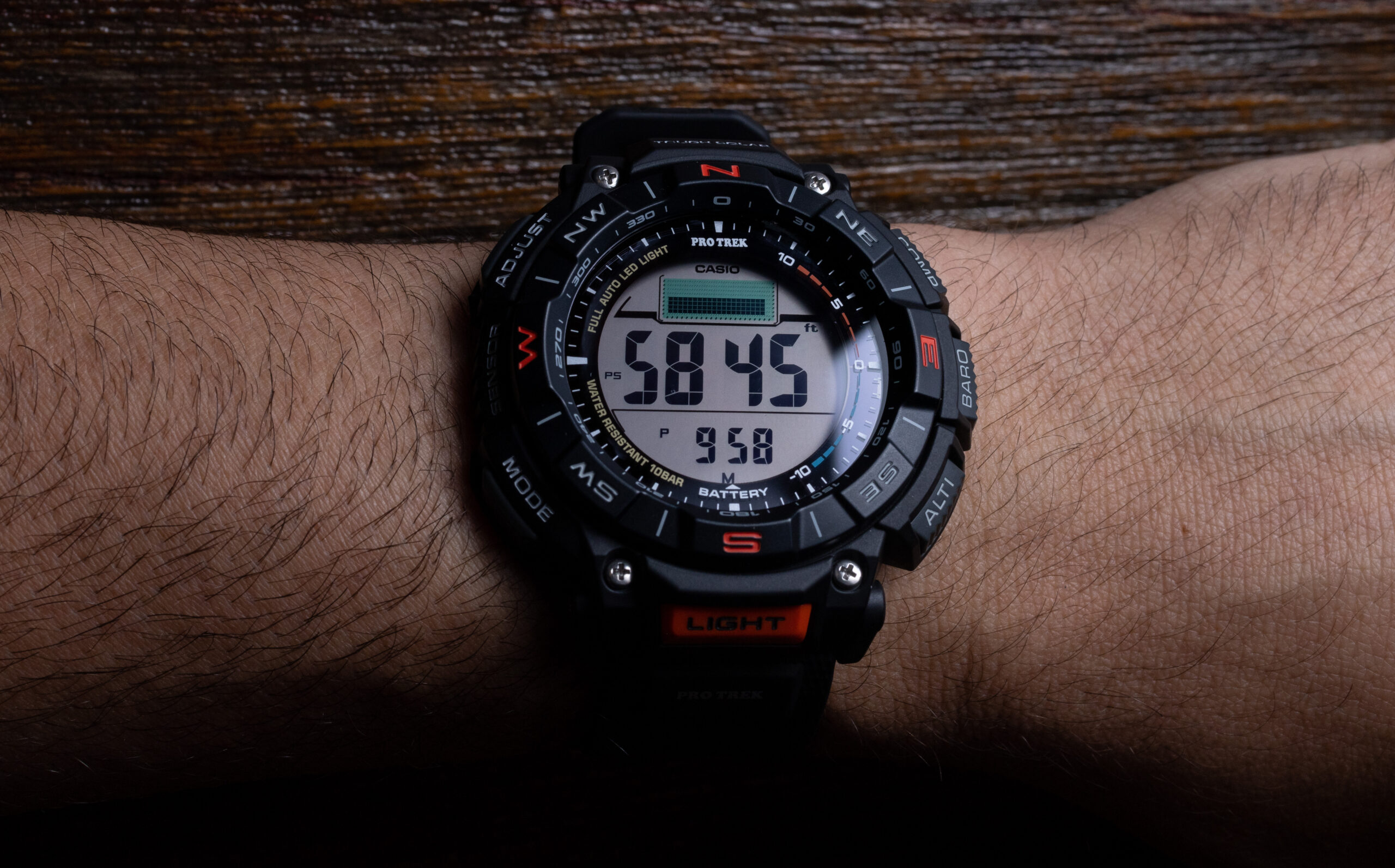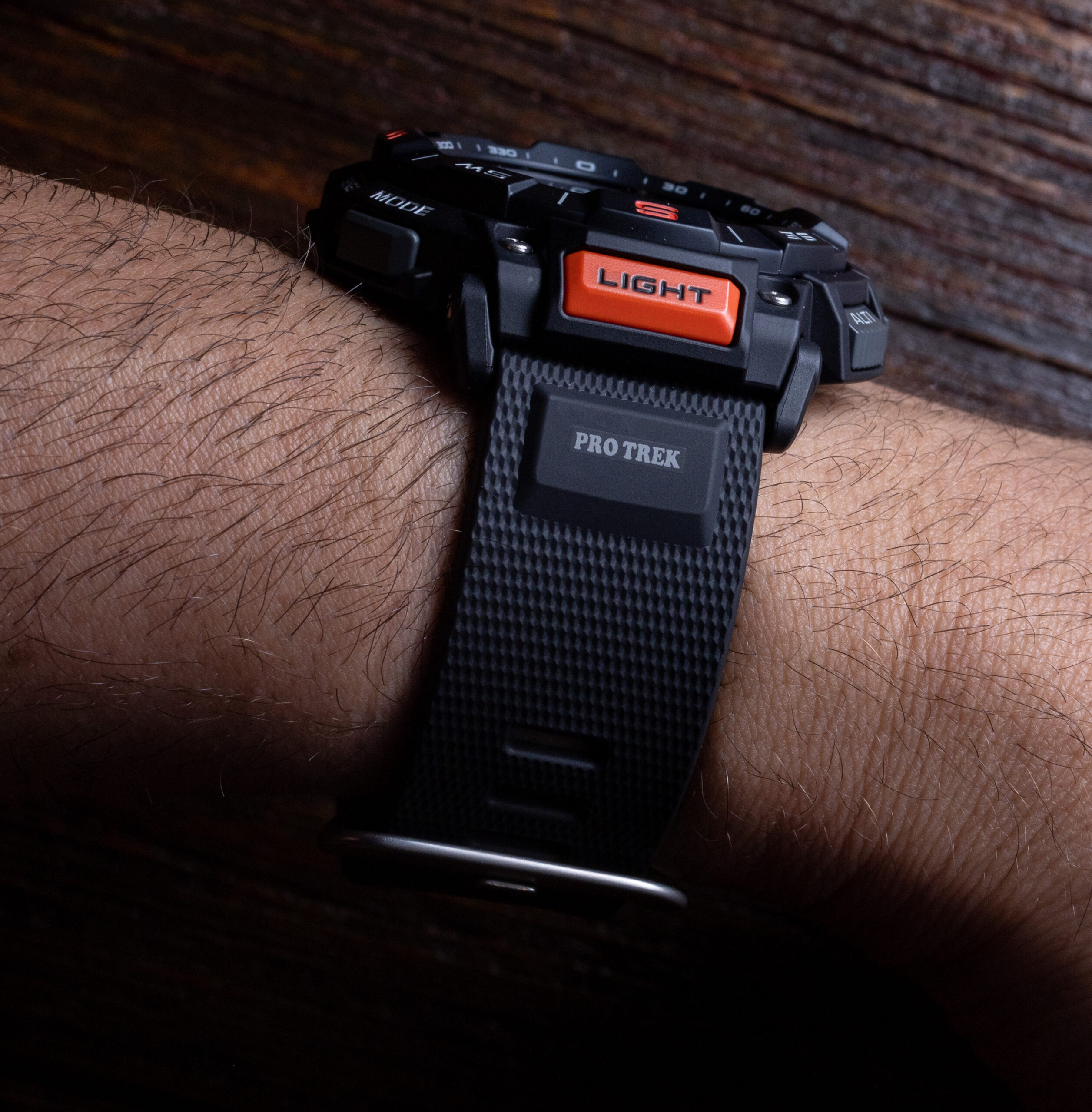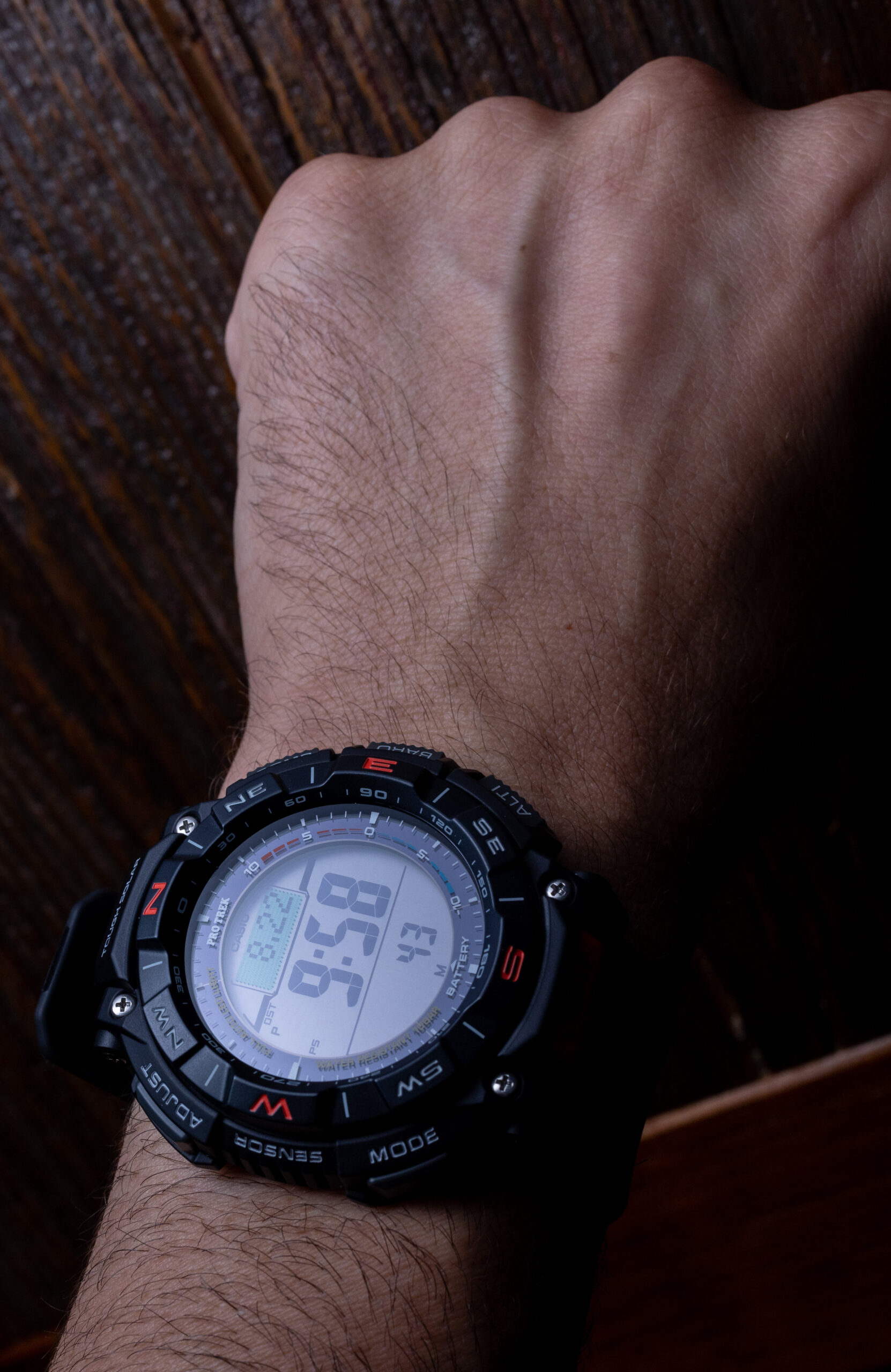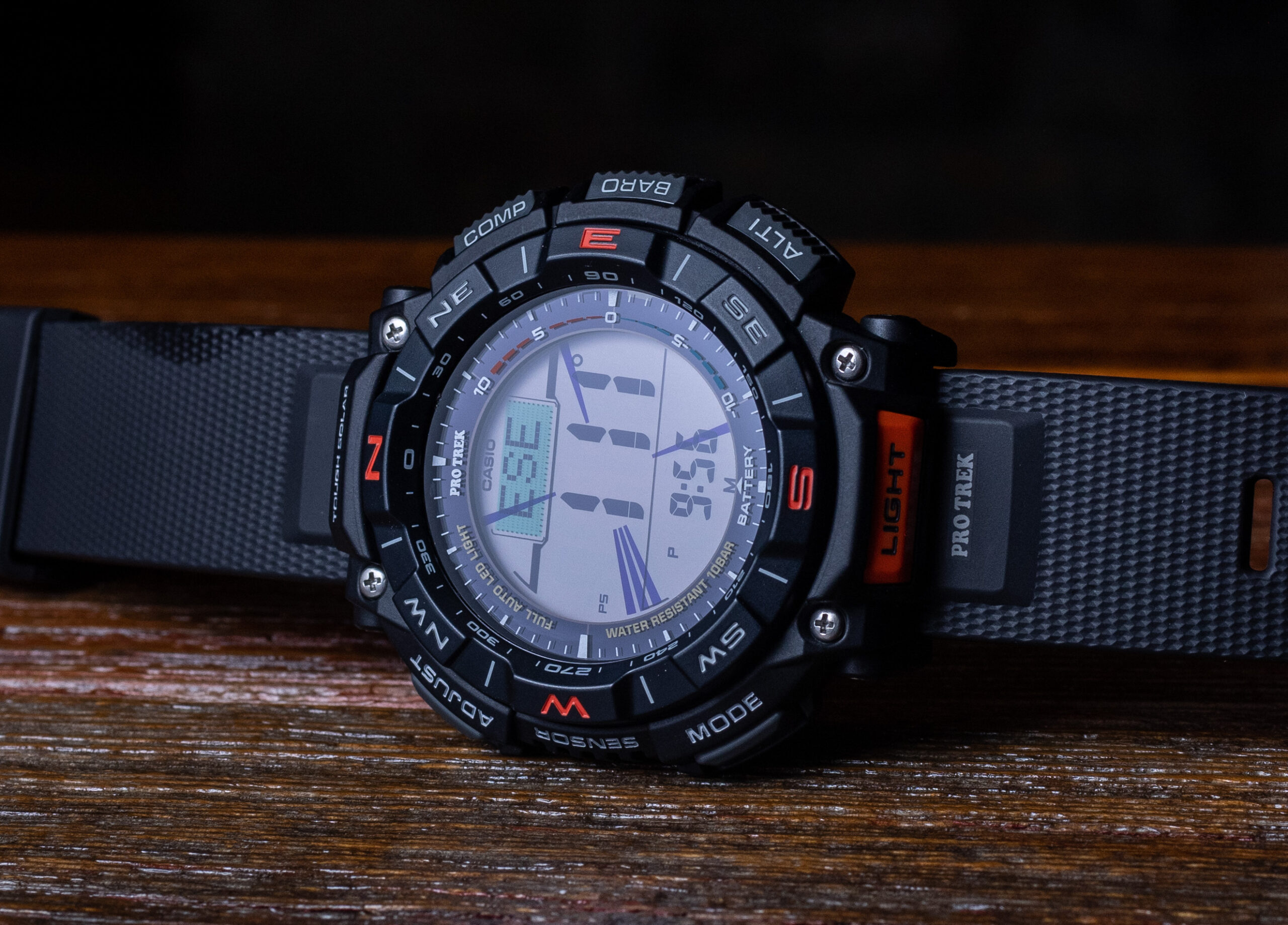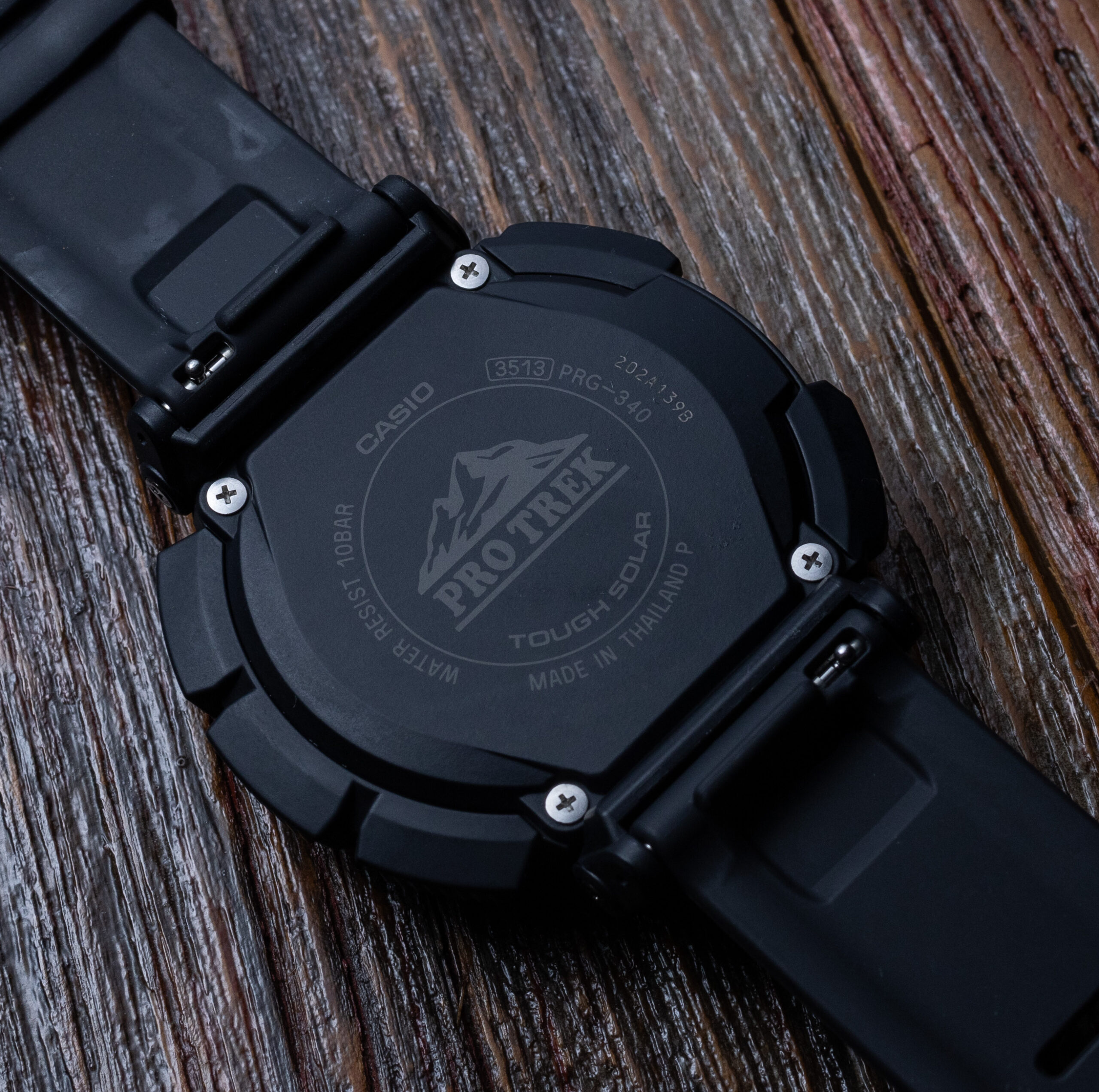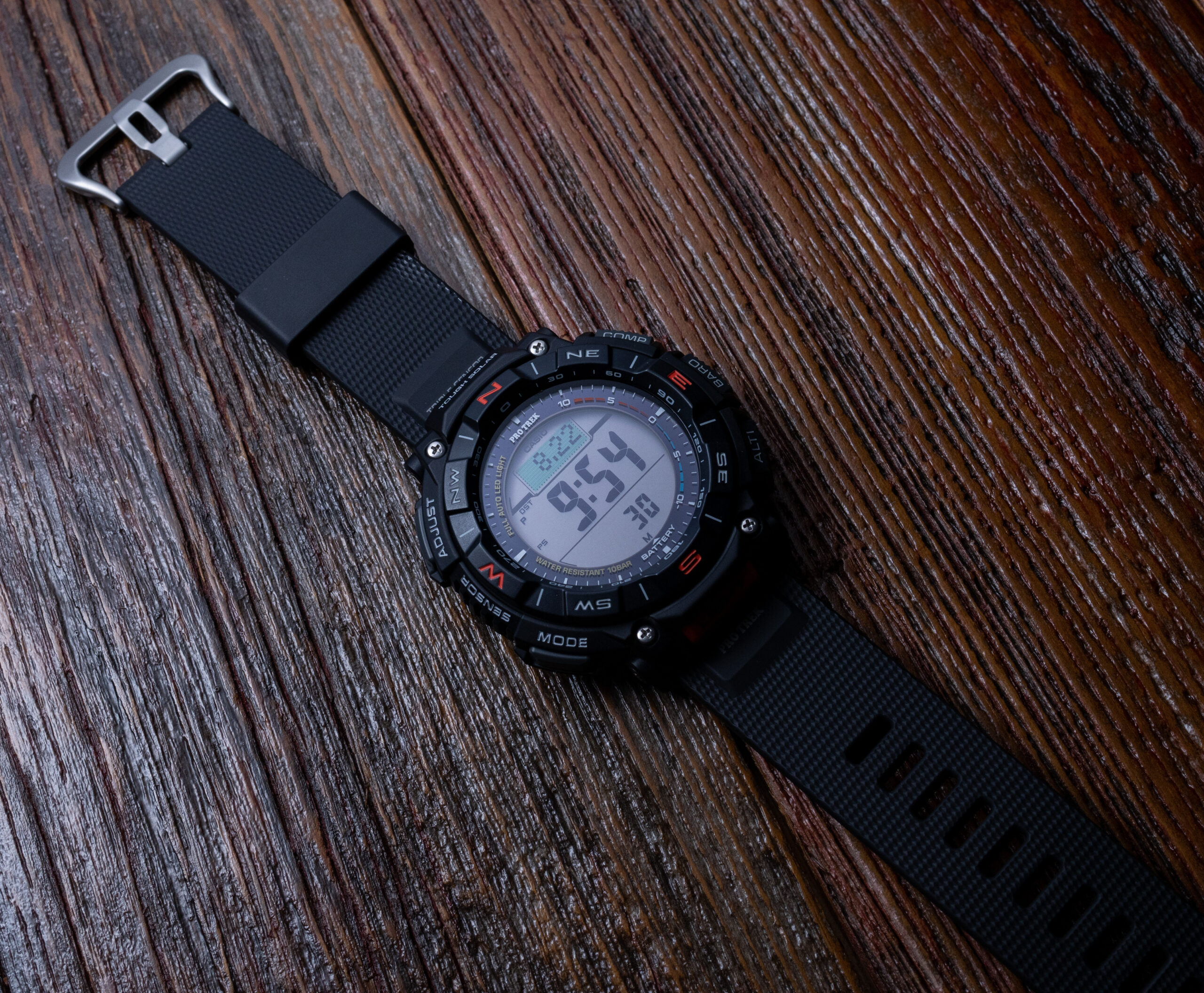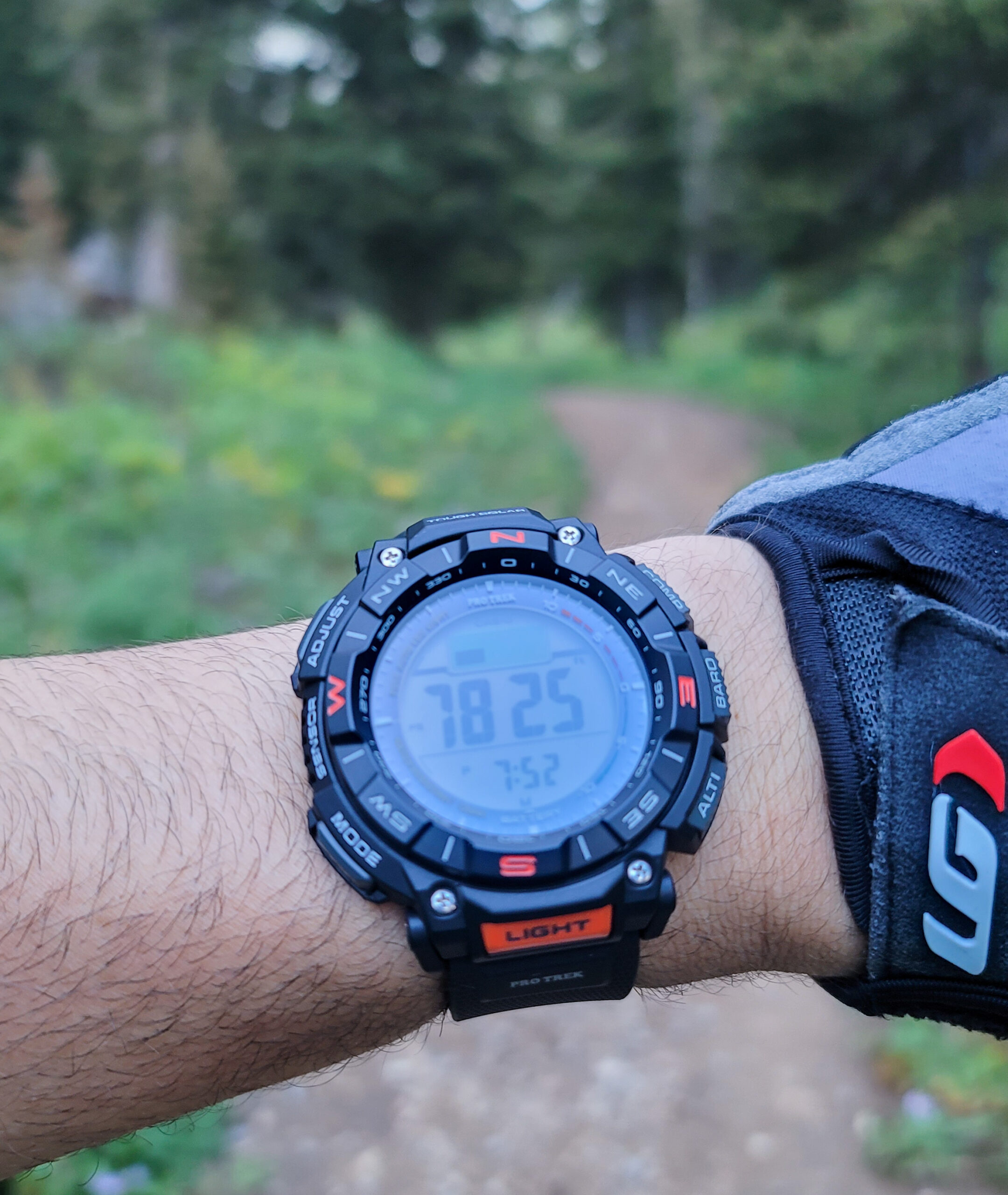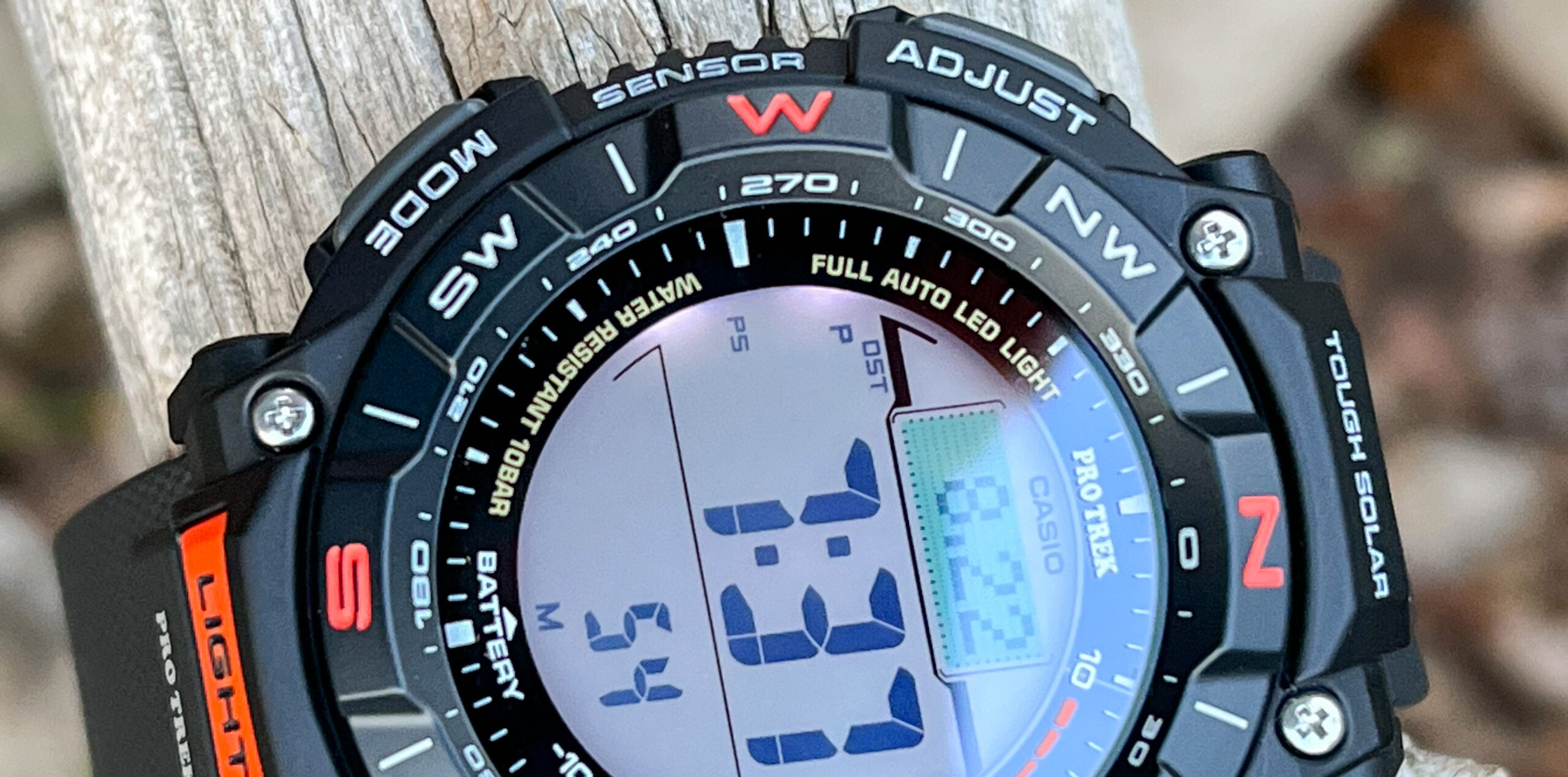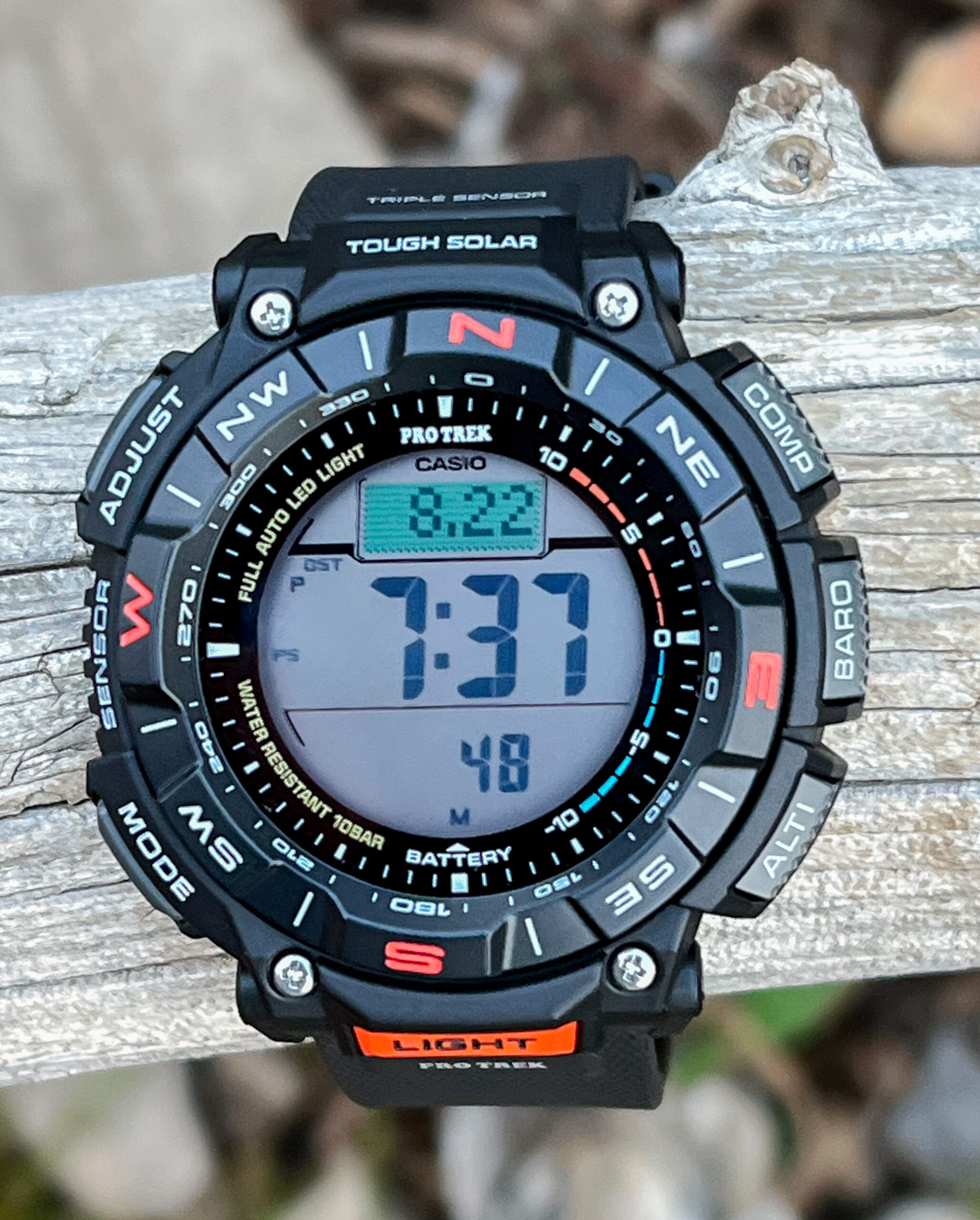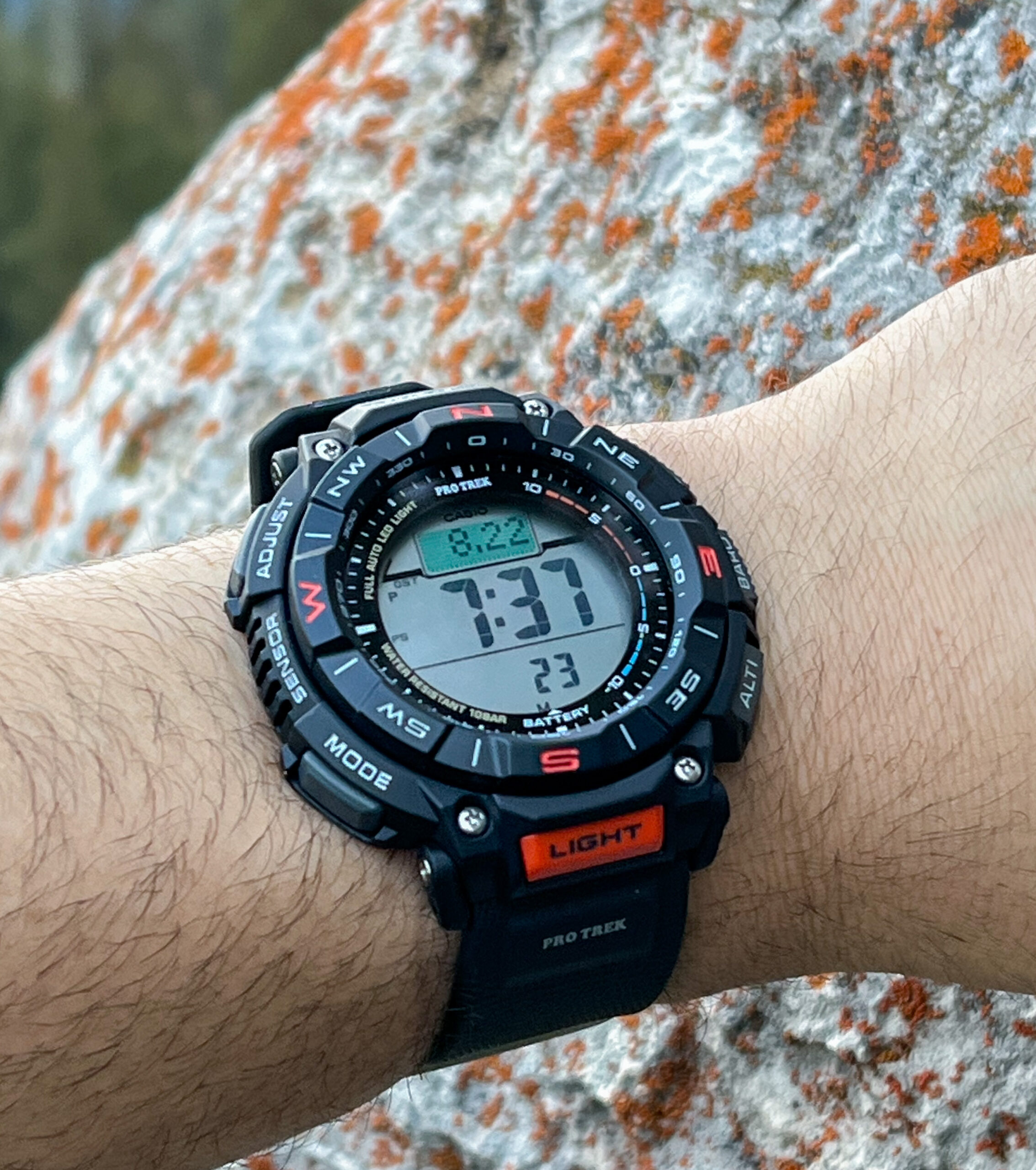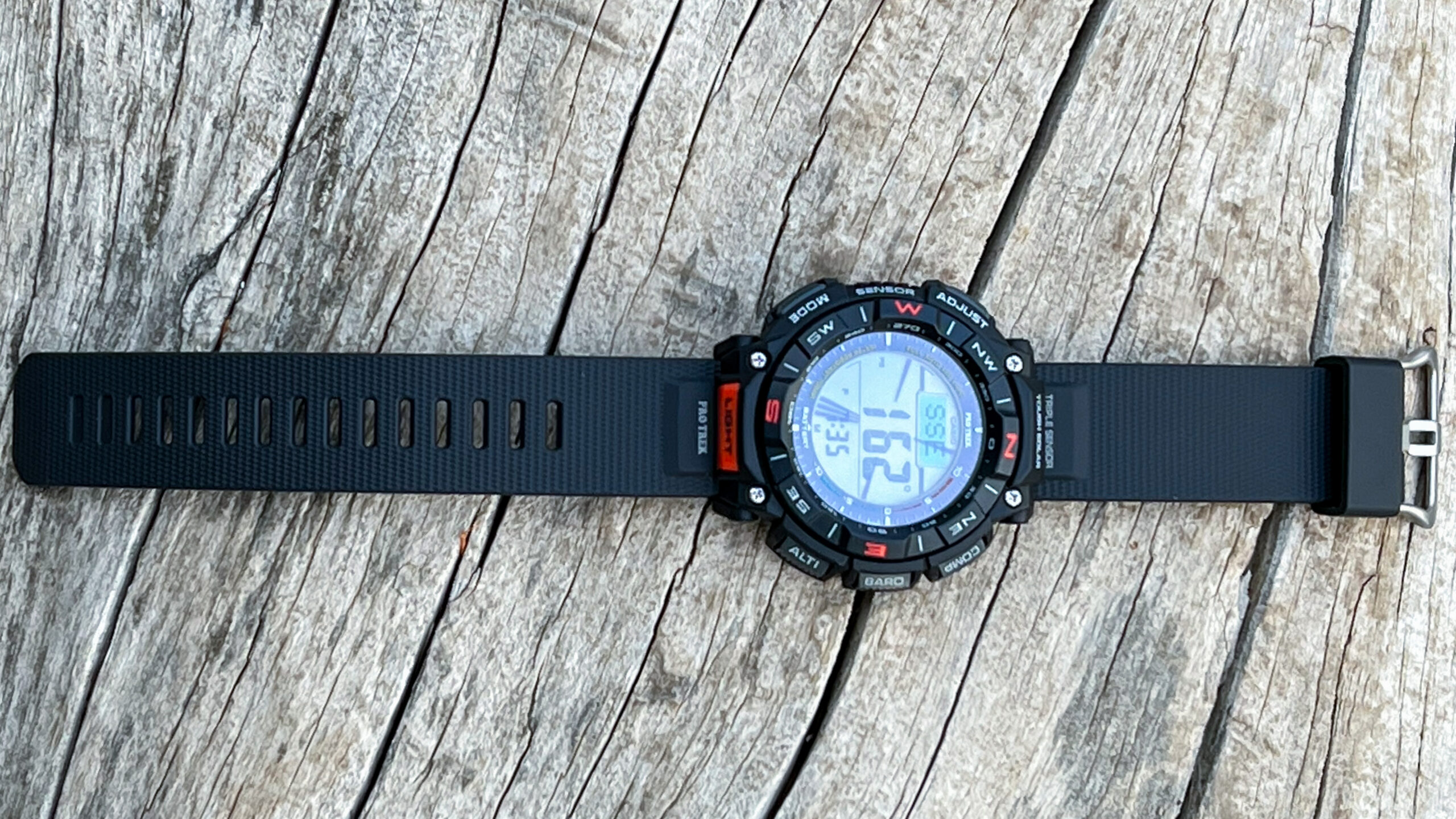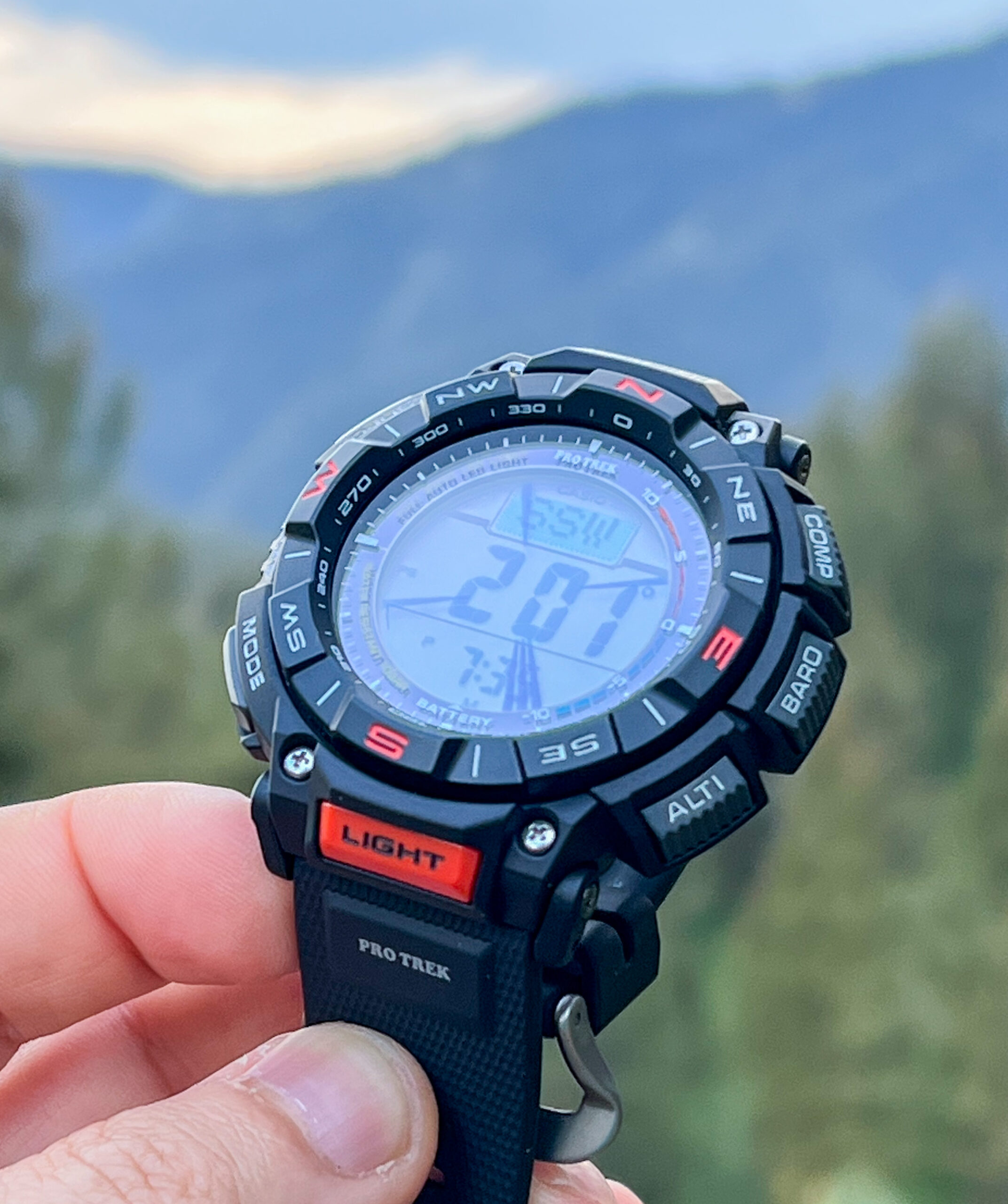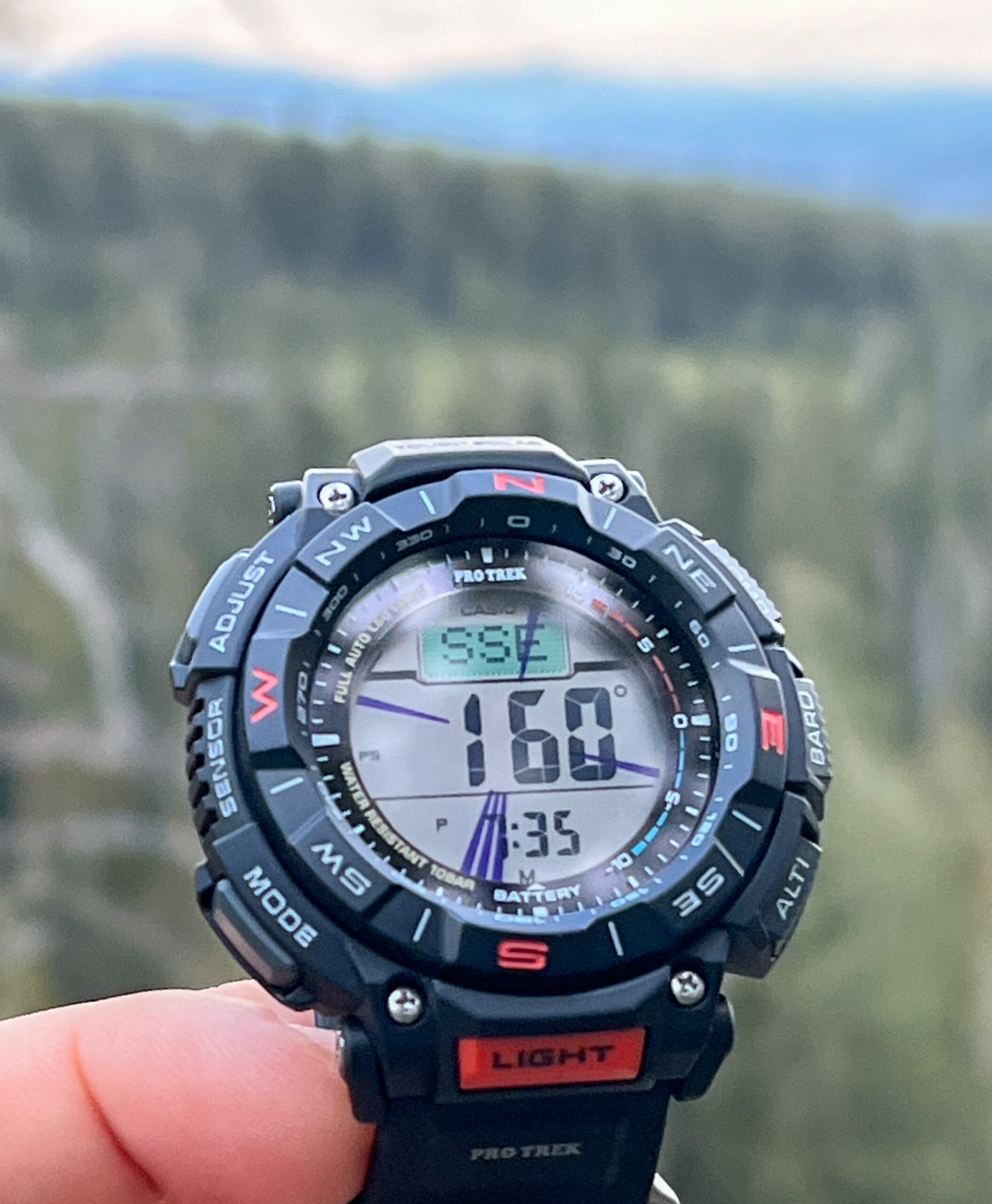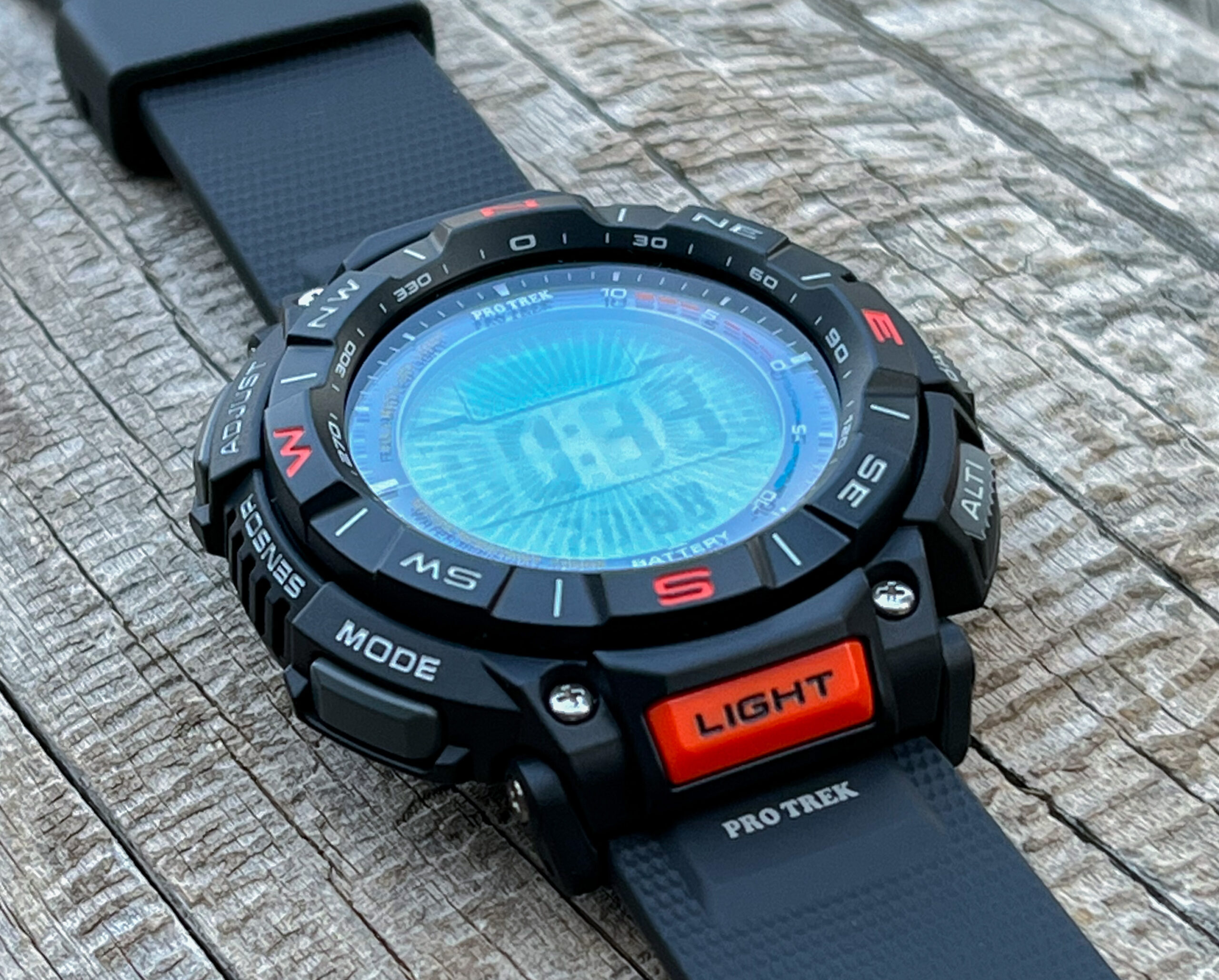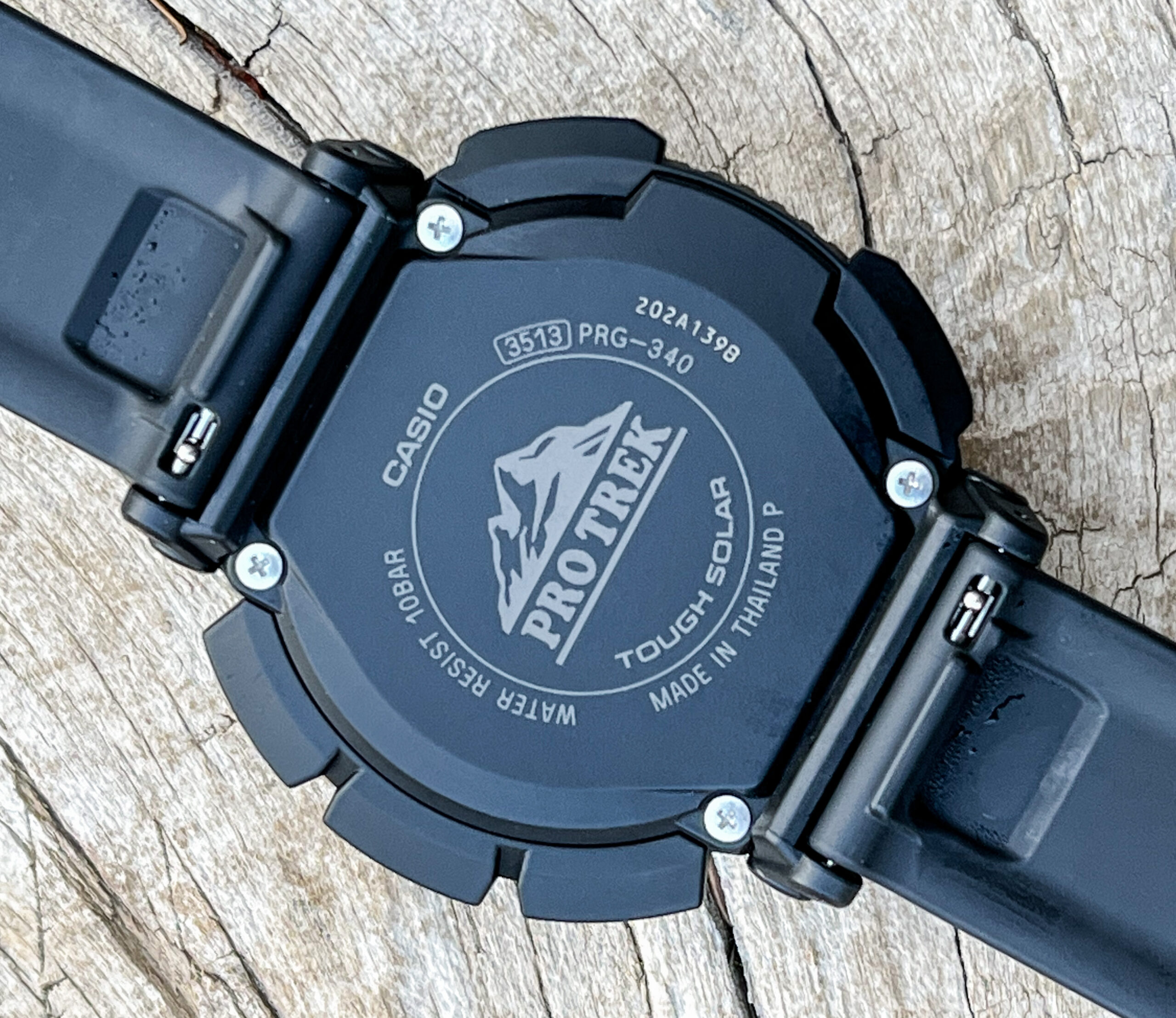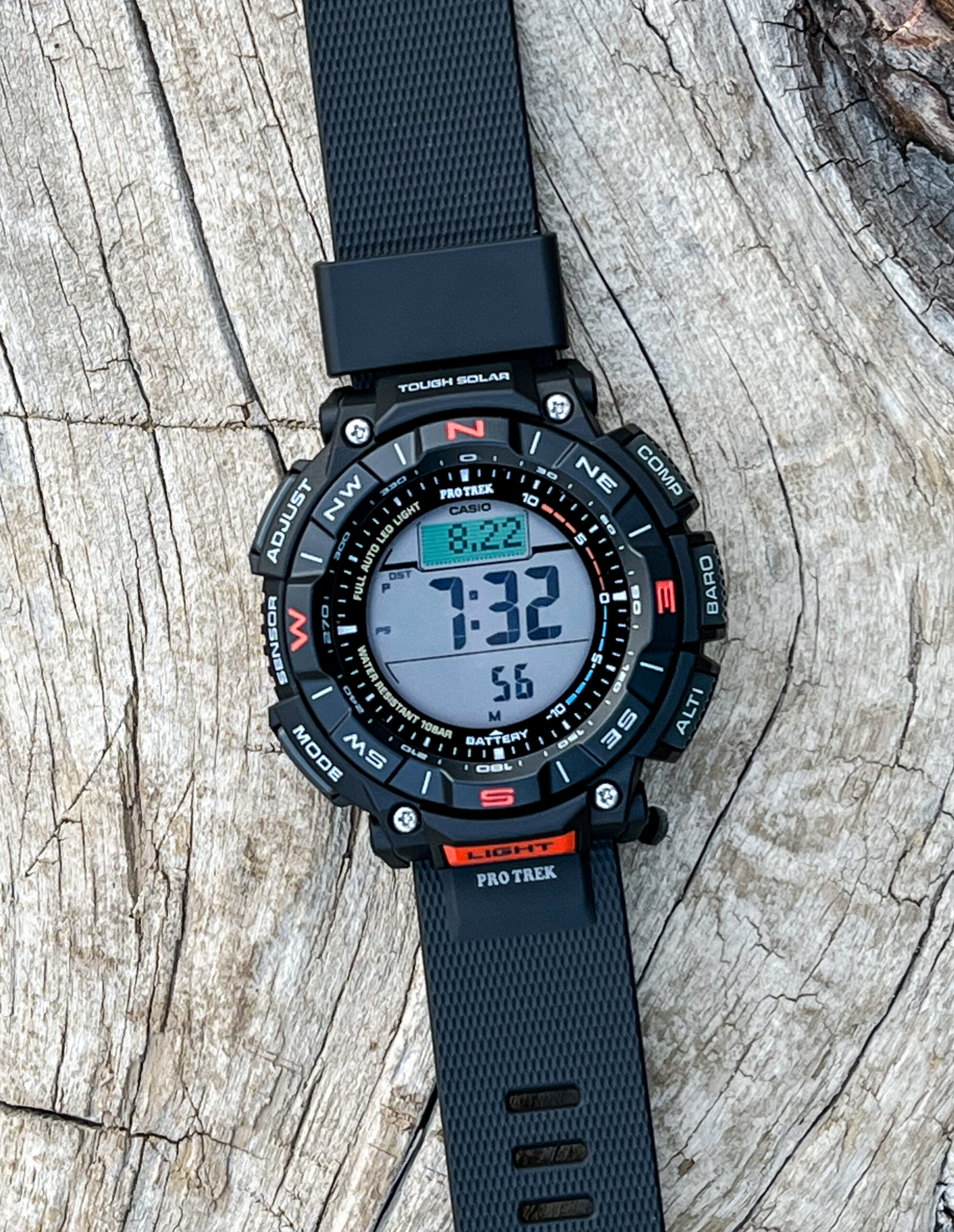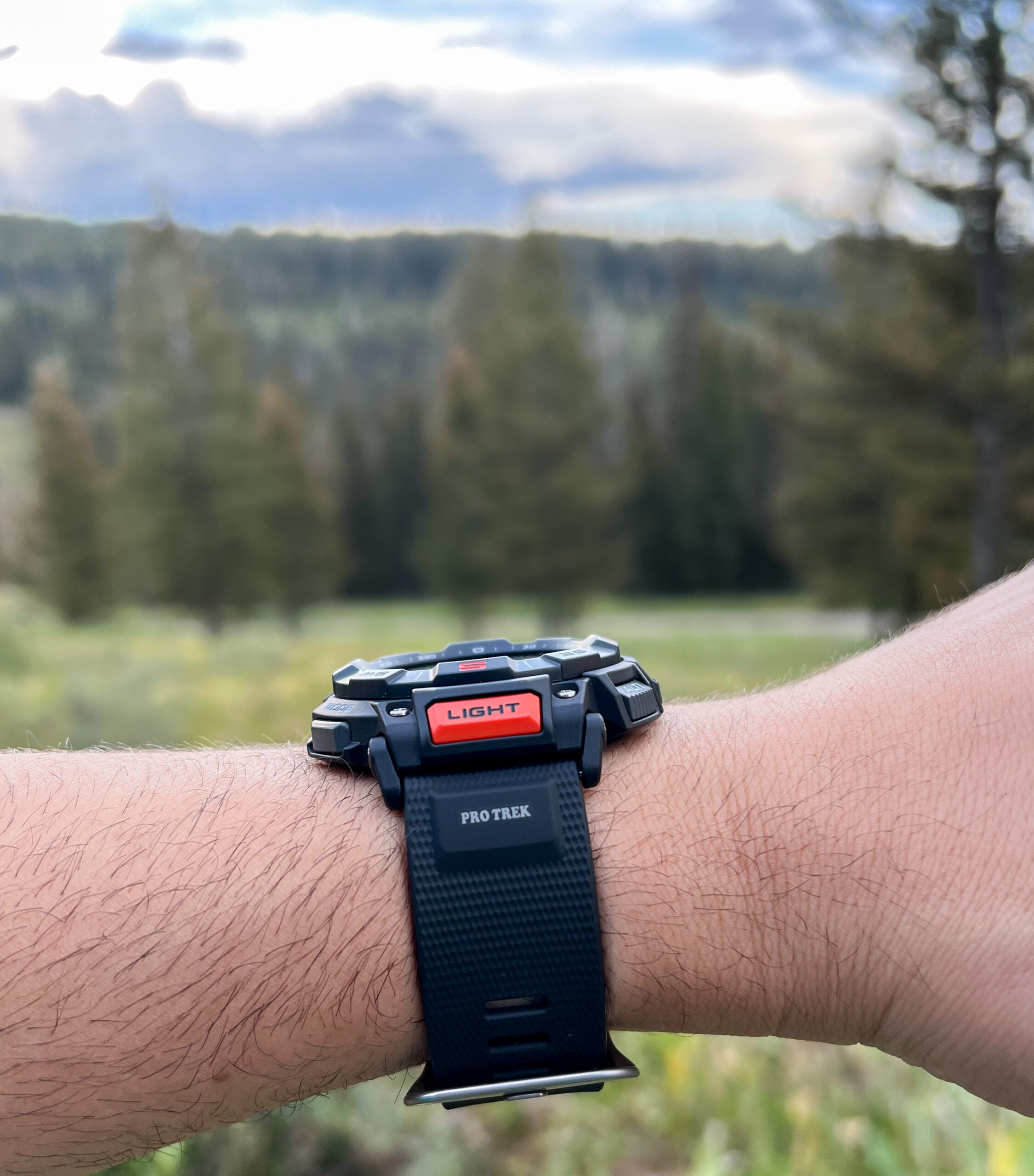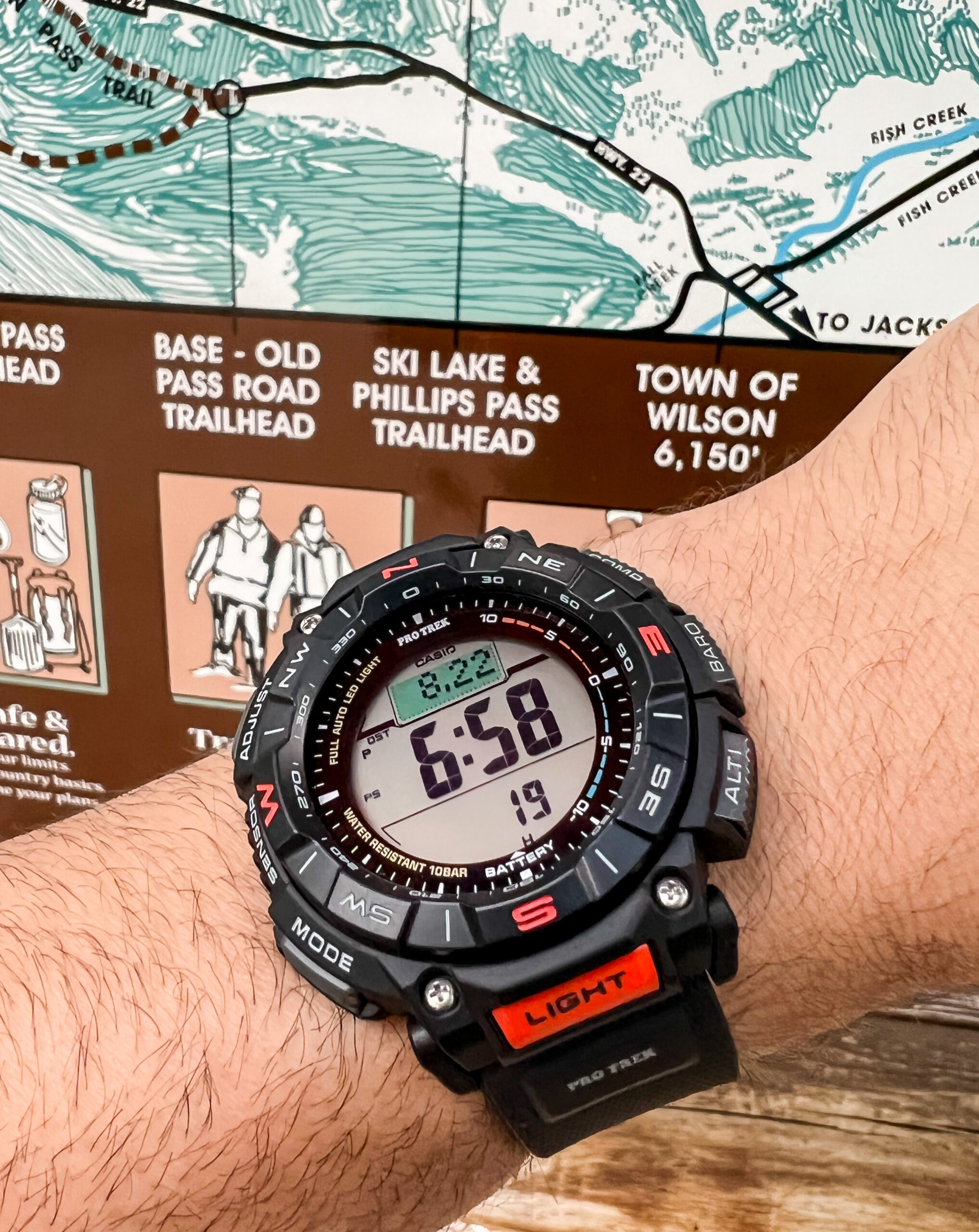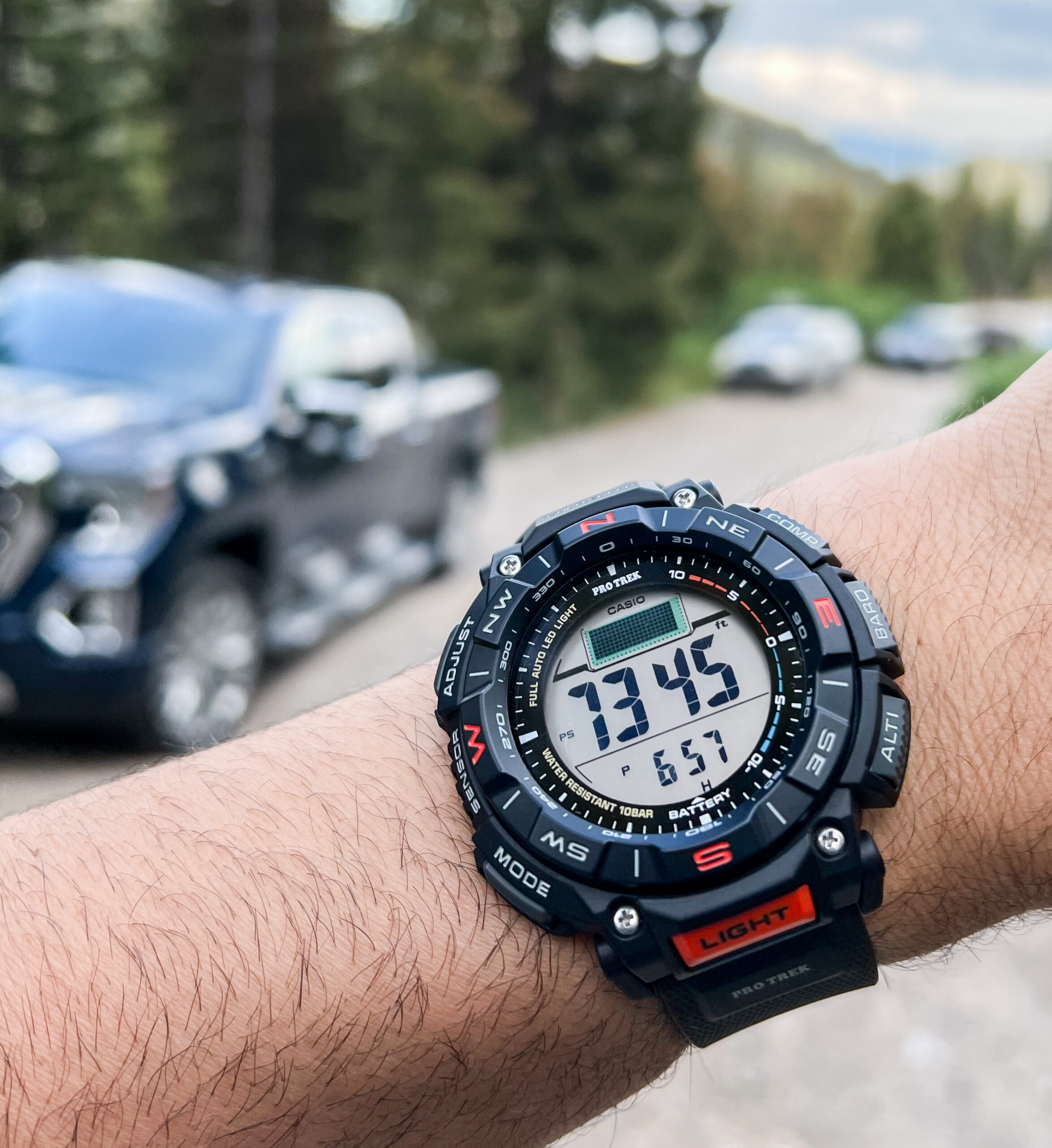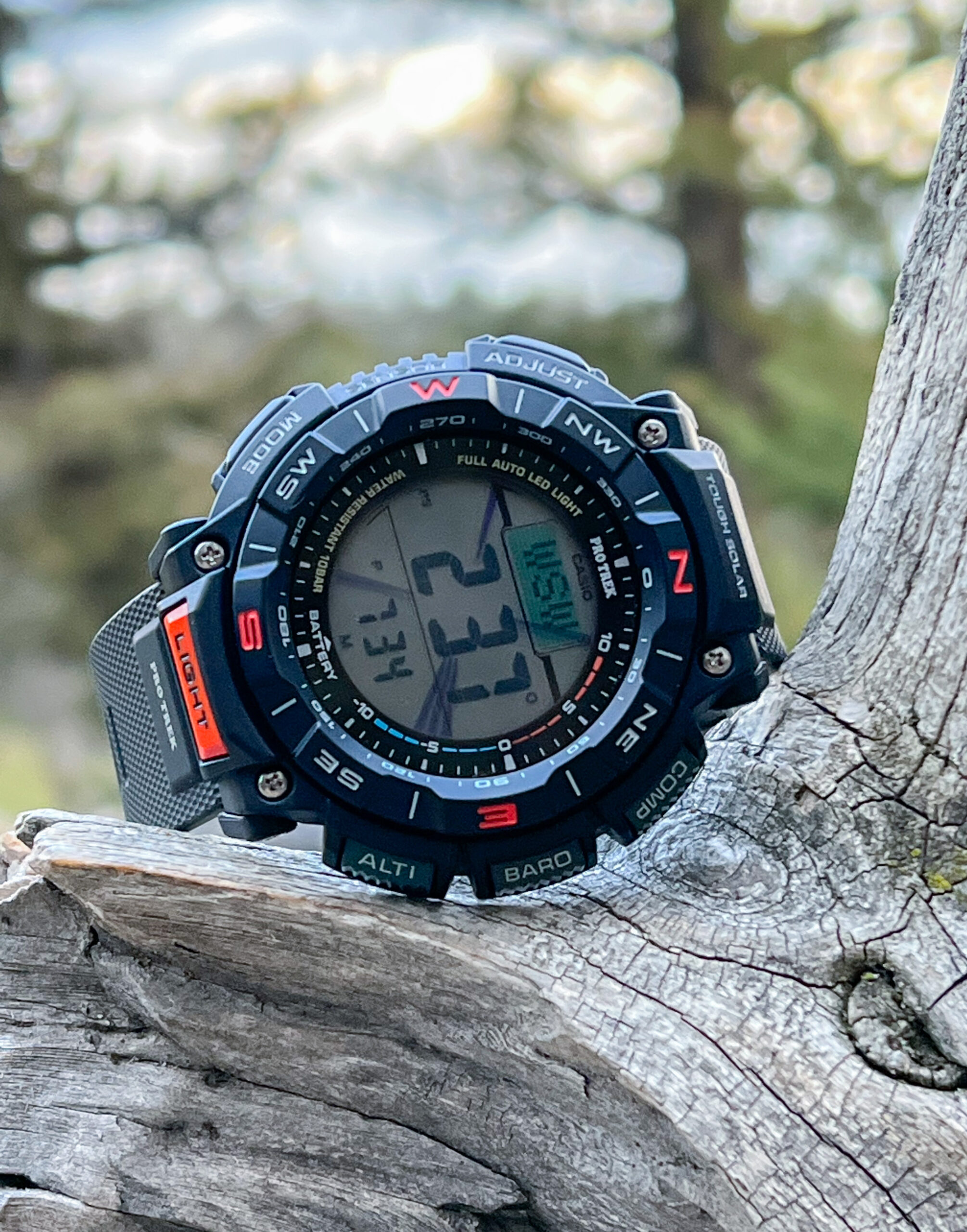
One of the latest watches in the Casio Pro Trek collection is the PRG340 family, which currently consists of three models, including the pictured PRG340-1, PRG340-3 (which has yellow versus red color accents), and the slightly more expensive (by just $50) PRG340T-7 that has a case fitted with titanium sections, as well as a matching titanium bracelet. Casio doesn’t break new ground here from a technical standpoint, but these watches are a slimmed-down and modernized version of a classic outdoor timepiece that countless hikers, campers, trekkers, hunters, fishers, etc., have relied upon for many years. To review the Casio Pro Trek PRG340, I did what one should do with a timepiece like this — I took it into the mountains.
Pro Trek watches have traditionally been typified by their “triple-sensor” array, which includes a compass, barometer, and altimeter. Since the latter two actually use the same sensor, an additional thermometer is included in the mix, though you need to take the watch off your wrist for a bit to get a proper reading. Over the years, Casio has included solar charging (Tough Solar movement module) for the battery and a host of other little software features (such as sunrise/sunset time and other “complications”) that help increase the utility of these fun little wrist gadgets. It was probably predictable that Casio G-Shock watches would intrude into the Pro Trek space, and that has certainly happened. It really started when Casio decided to put the full ABC (altimeter, barometer, compass) functions into the G-Shock Rangeman. Since then, consumers have been a bit confused about the Pro Trek vs. G-Shock question, and I understand that. That said, there are still some important areas in which Pro Trek products are useful.
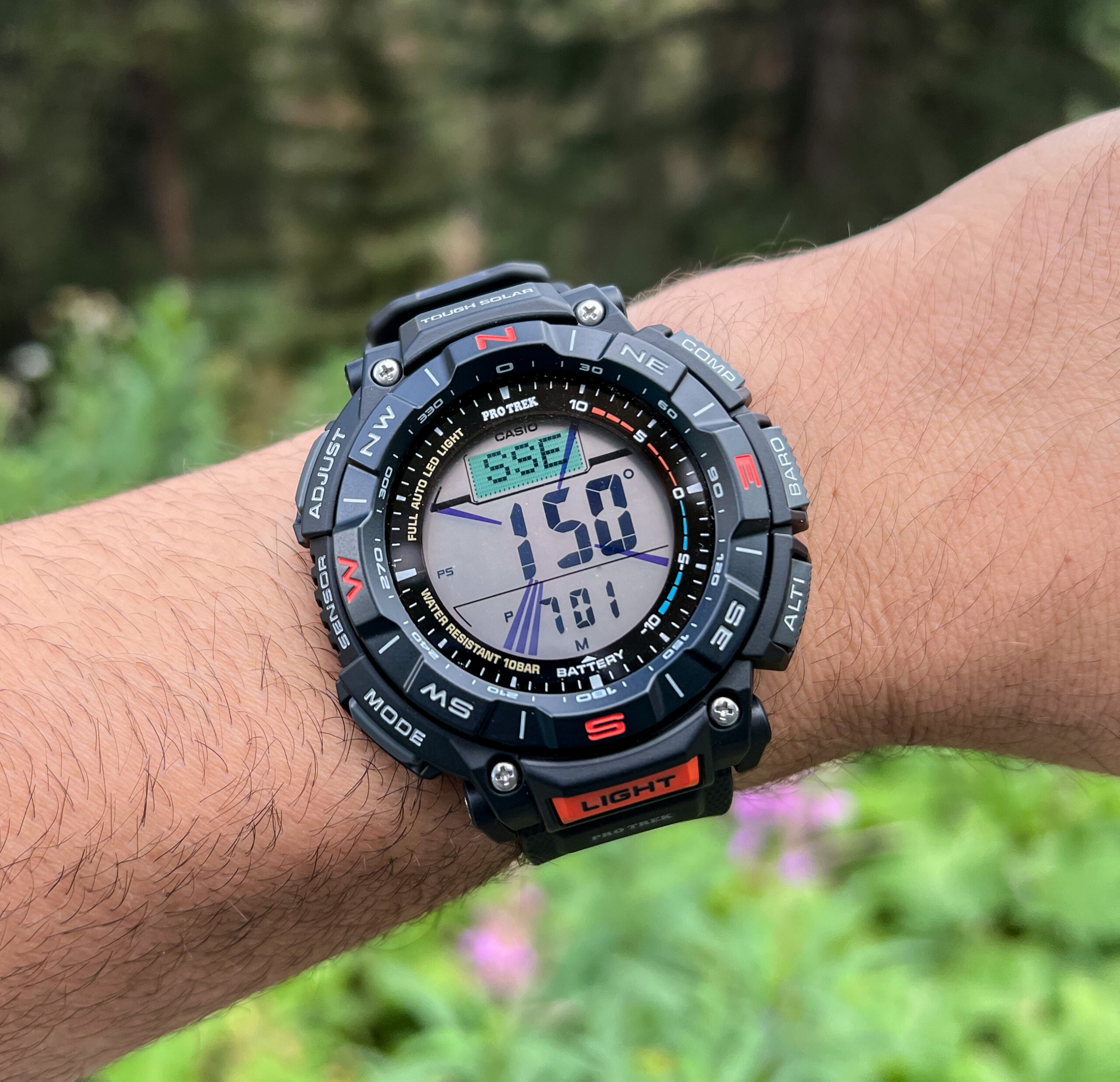
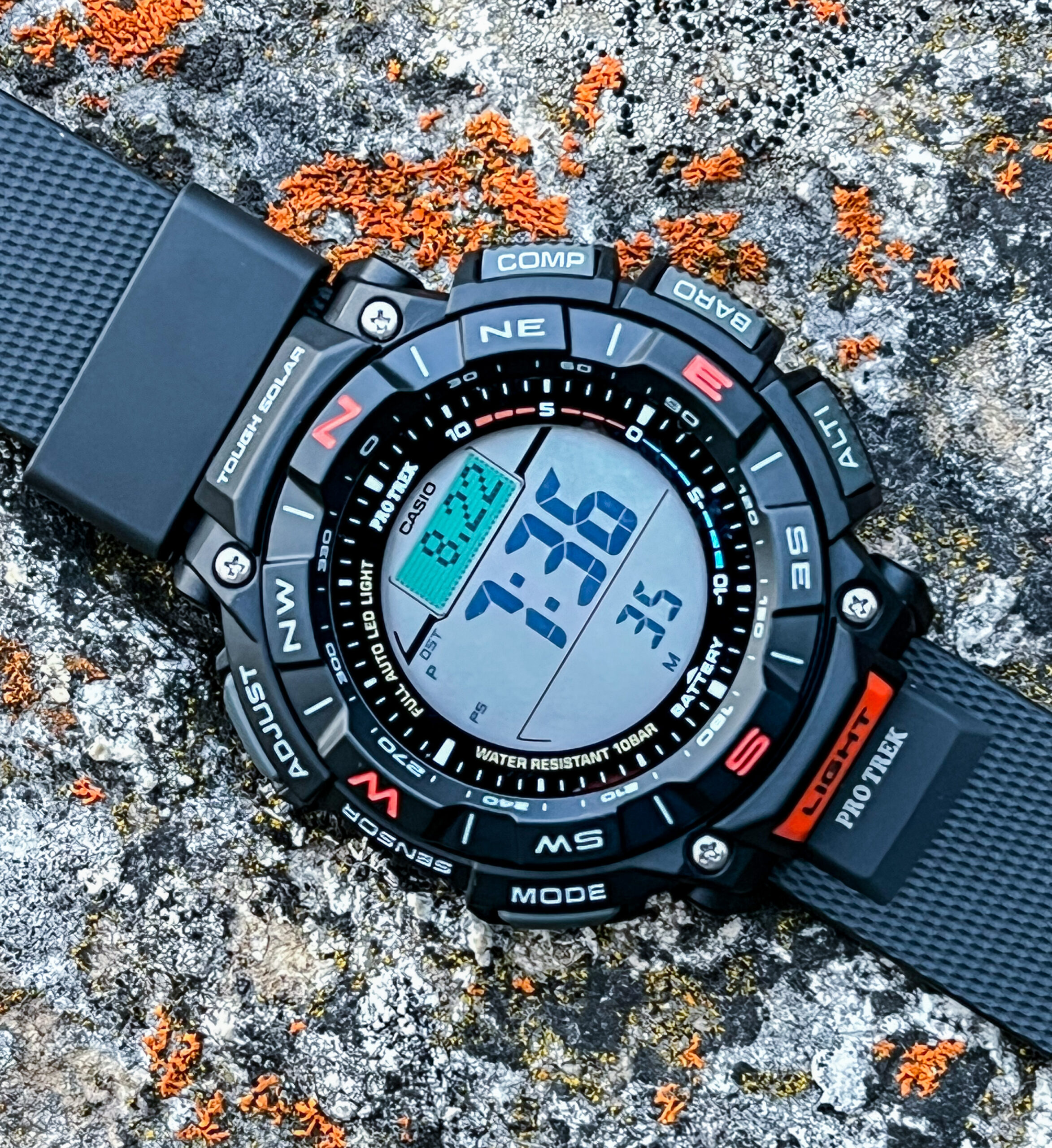
Some of those areas include legibility and usability. While G-Shock watches can require a bit of a learning curve to understand all the functions, Pro Trek watches are comparatively simple to understand and operate with handy dedicated buttons to access necessary features and a very clear and legible display. Casio protects its G-Shock collection by making the watches a bit more water resistant and durable, on average, but from a visual standpoint, I think you can agree that Pro Trek and G-Shock watches are two different beasts. But it is true that Casio product managers have to tread a thin line to make sure that G-Shock and Pro Trek model worlds don’t step on each others’ feet too much.
I grew up lusting after Pro Trek watches as a kid. The variety of functions and sensors led the 10-year-old in me to believe that these were the world’s most capable gadget watches. In a lot of ways, they were. Now, the best Pro Trek watches are a vestige of the non-connected smartwatch world — products that can perform all of their functions in the middle of nowhere, without any need for civilization. Core functions like the compass, altimeter, and barometer are designed to assist with navigation, weather prediction, and overall safety when you are deep in the wilderness. You need some skill when it comes to how to use all of this data (such as understanding what shifts in barometric pressure mean) but, overall, these are very competent wrist gadgets that aren’t very expensive and can offer years of utility.

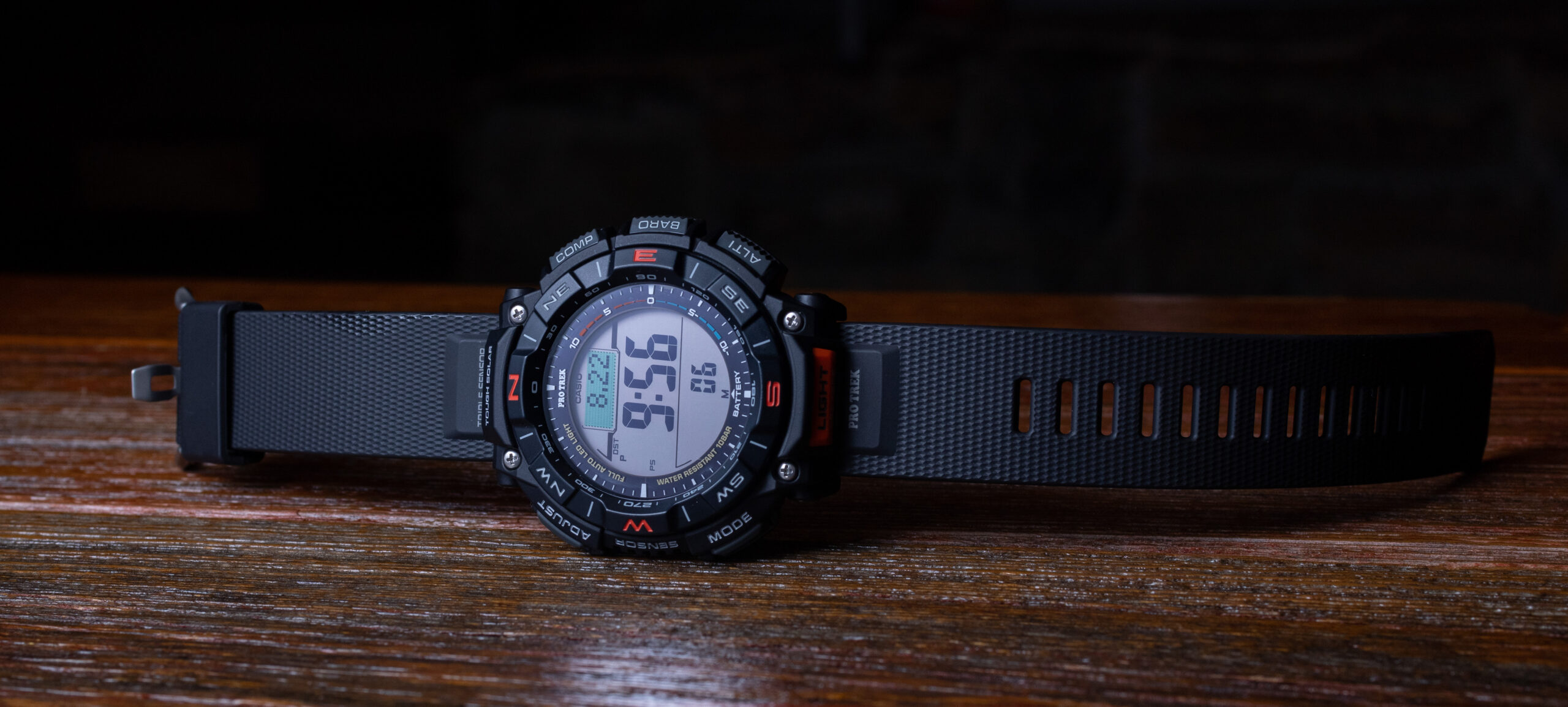
While the PRG340 might look a lot like classic Pro Trek models, the case is relatively new and produced from sustainable biomass plastics. The case wears smaller than it sounds but is rated at 51.7mm-wide, 54.7mm lug-to-lug distance, and 15.1mm-thick. Note the still-new articulating lugs to help the watch wear more comfortably even on smaller wrists. The case is water resistant to 100 meters and has a mineral crystal under a protective bezel. The free-moving rotating bezel is used for navigational purposes. Casio also includes quick-release bars for the straps, a feature that is increasingly common on these models. The strap looks a lot like classic Pro Trek polyurethane straps but is actually surprisingly thin and pliable, making for a lot of wearing comfort. The entire watch and strap weigh very little, just 54 grams in total.
One of the things I’ve always loved about Pre Trek watches is the focus on legibility. Not only is the time display very large and easy to see, but other information on the dial is also designed to be easy to view. This includes everything from the little multi-purpose graph section on the dial, as well as how you operate and read the various sensor functions such as the altimeter and the compass. Compared to modern smartwatches and other connected products, the information displayed on a Pro Trek can seem simple by comparison. But that’s really the point of a product like this — it is for people who don’t want a connected product, either because they are too frequently out of mobile service range, or because they just don’t like the idea of worrying if the battery is charged or if there will be a software problem. What Casio offers with the Pro Trek is rock-solid reliability. I also want to mention that, while the PRG340 is not a connected watch, it does have the longstanding ability to receive radio signals from a nearby atomic clock in order to update the time. This doesn’t work all over the world but is a legacy function in a number of Casio products.
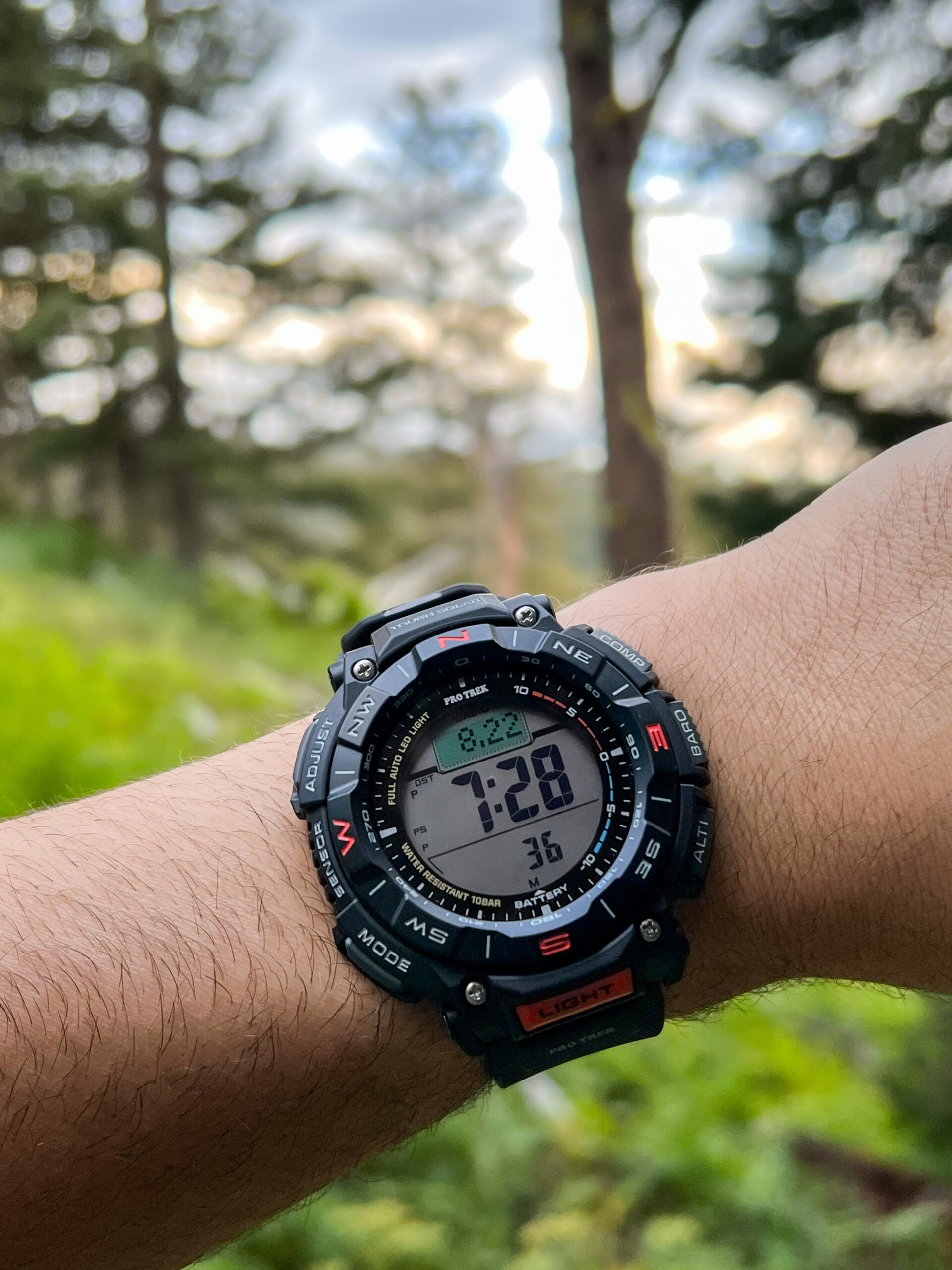

One of the more visually fun features that the PRG340 models have is Casio’s “duplex LCD screens,” which are used for the compass function. This places a secondary LCD screen over the main one and is used for the compass needle indicators that overlay the main screen. This isn’t new, but it is one of the more impressive inventions of the Pro Trek family and something I am happy to see here in this PRG340. To my knowledge, this particular system has yet to find its way into a Casio G-Shock model.
Hiking at over 7,000 feet in the territory where it often rains (I got rained on) was a perfect place to test out the Casio Pro Trek PRG340 in the wild. I was able to precisely measure both my current altitude and altitude gains, as well as rely on the compass to help keep my bearings in unfamiliar lands. The barometer (and thunder sounds in the sky) were a good clue that it was going to rain, and knowing that proved very helpful. While the Pro Trek family is very much “classic” by today’s gadget watch standards, there is still a lot of appeal here, and I think plenty of people could make use of a watch like this while participating in the right outdoor activities. For me, it was a welcome blast from the past, and I look forward to hiking with it more. Retail price for the Casio Pro Trek PRG340-1 is $280 USD. Learn more at the Casio website here.

